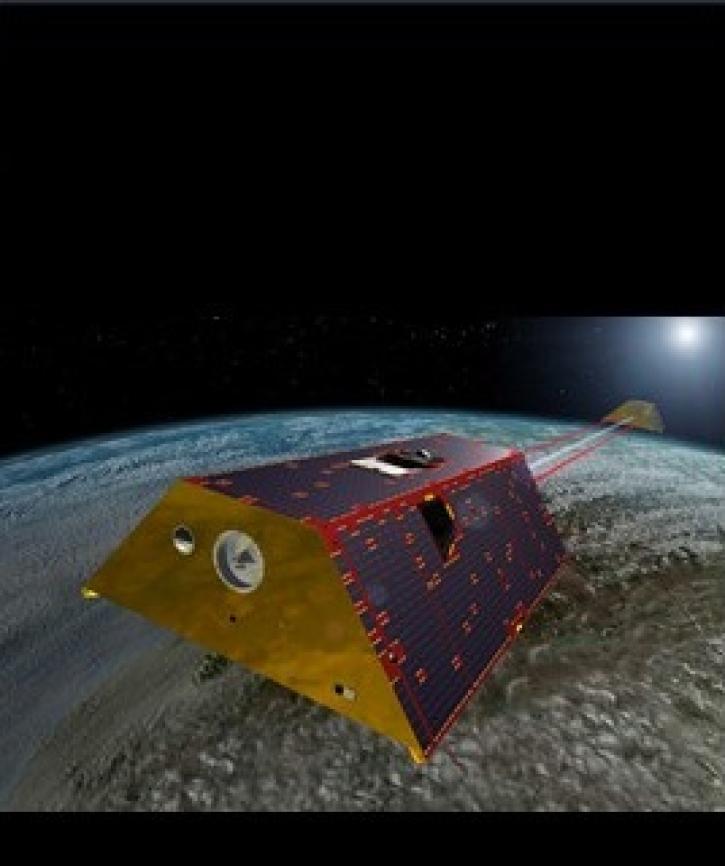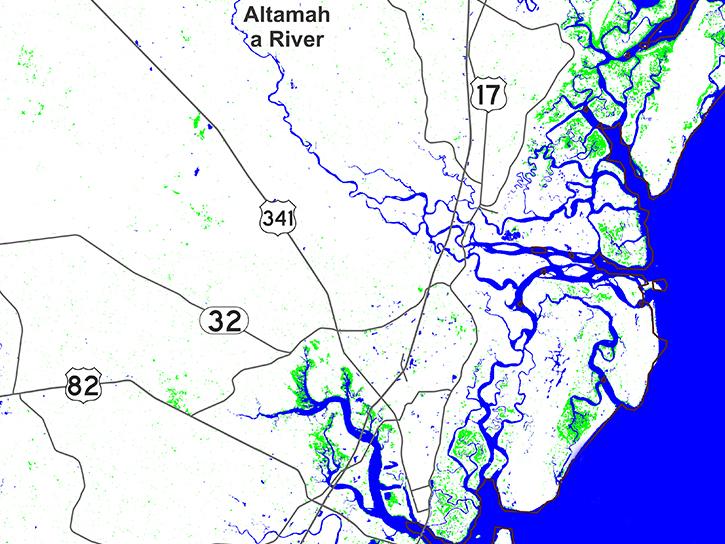Due to the lapse in federal government funding, NASA is not updating this website. We sincerely regret this inconvenience.
Ground Water Data Access and Tools
NASA has ground water datasets that help researchers characterize the location and use of ground water . Access a range of data and data tools such as the GRACE(-FO) Data Analysis Tool, AppEEARS, and GRACE Python scripts to make the most of ground water data.
Table of contents
Featured Observation Method: GRACE
The NASA/German Space Agency (DLR) Gravity Recovery and Climate Experiment (GRACE) and GRACE Follow-on (GRACE-FO) platforms consists of two identical satellites that work together in orbit. The two satellites follow each other around the planet spaced 137 miles apart. Together hey measure differences in how Earth's gravity pulls on the satellites, which in turn can be used to reveal changes in the mass of water on and under the surface of Earth.
The GRACE satellites flew from March 2002 to October 2017 and GRACE–FO satellites have been in space since May 2018.
The GRACE satellites flew from March 2002 to October 2017 and GRACE–FO satellites have been in space since May 2018.
A team of NASA and university scientists has developed a new way to use measurements from NASA's GRACE mission to track changes in Atlantic Ocean currents.
1 MIN READ
Two datasets from the Gravity Recovery and Climate Experiment Follow-On (GRACE-FO) mission have just been released by NASA’s PO.DAAC.
2 MIN READ
Sentinel-1 synthetic aperture radar (SAR) data are used to create maps of surface water extent for research, planning, and disaster response.
Three new datasets show more than 17 years of variations in ice mass and ice mass changes from Antarctica and Greenland as well as global ocean mass change.
Ground Water Datasets
| Dataset | Platforms | Instruments | Temporal Extent | Location Keywords | Spatial Extent | Data Format |
|---|---|---|---|---|---|---|
| Lund-Potsdam-Jena Wetland Hydrology and Methane DGV Model (LPJ-WHyMe v1.3.1) | NOT APPLICABLE | NOT APPLICABLE | 1972-01-01 to 2010-10-15 | N: 90 S: -60 E: 180 W: -180 | multiple | |
| NACP MsTMIP: Global 0.5-degree Model Outputs in Standard Format, Version 1.0 | MODELS | Computer | 1900-01-01 to 2010-12-31 | N: 90 S: -90 E: 180 W: -180 | netCDF-4 classic | |
| SAFARI 2000 Soil Profile Data (ISRIC-WISE) | NOT APPLICABLE | NOT APPLICABLE | 1950-01-01 to 1995-12-31 | N: 5 S: -35 E: 60 W: 5 | Text File | |
| Trends in Global Freshwater Availability from the Gravity Recovery and Climate Experiment (GRACE) | GRACE | ACC | 2002-01-01 to 2016-12-31 | GLOBAL | N: 90 S: -90 E: 180 W: -180 | GeoTIFF, PDF, PNG, WMS |
| Water Security Indicator Model - Global Land Data Assimilation System (WSIM-GLDAS) Monthly Grids, Version 1 | MODELS | Computer | 1948-01-01 to 2014-12-31 | GLOBAL | N: 90 S: -90 E: 180 W: -180 | netCDF-4, PDF, PNG |
Pagination
- 1
- 2
SHOWING 5 OF 15
Frequently Asked Questions
Earthdata Forum
Our online forum provides a space for users to browse thousands of FAQs about research needs, data, and data applications. You can also submit new questions for our experts to answer.
Submit Questions to Earthdata Forumand View Expert Responses

